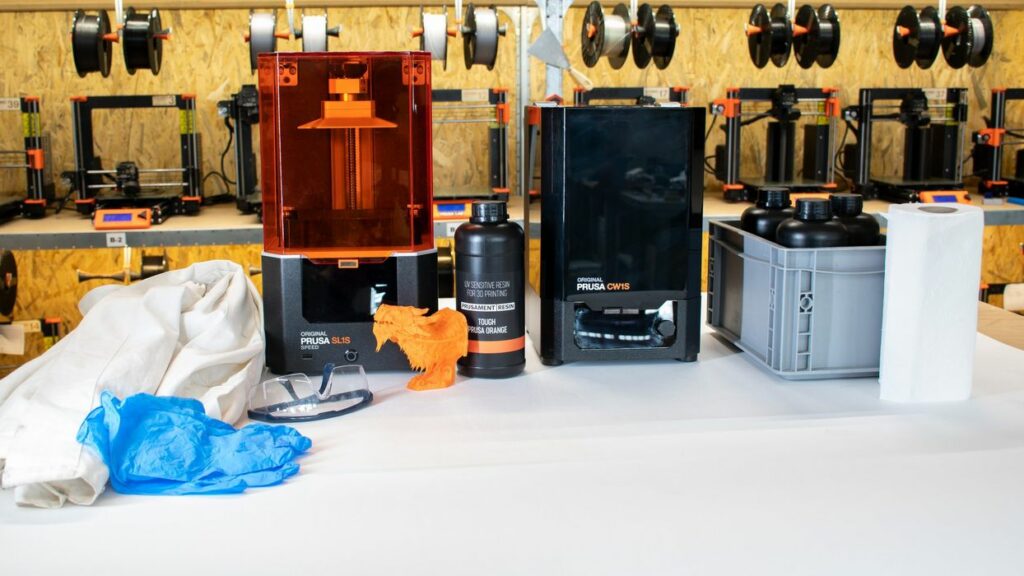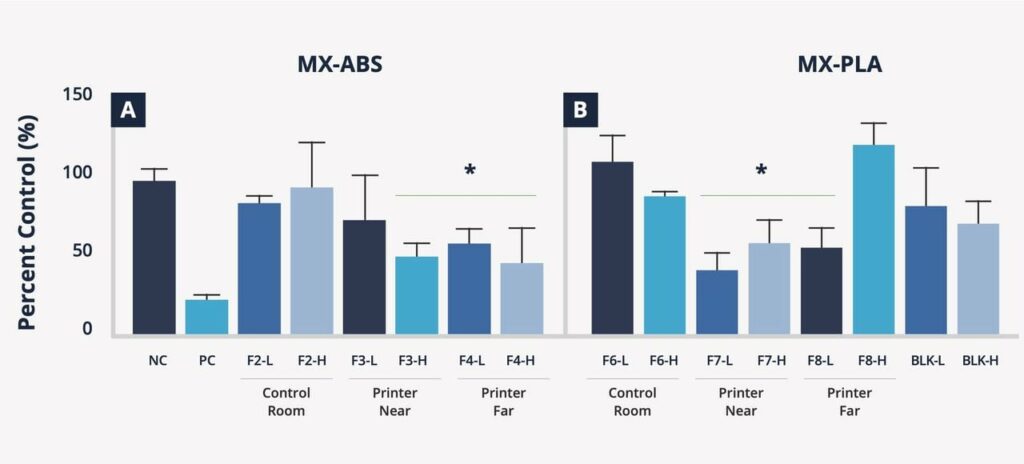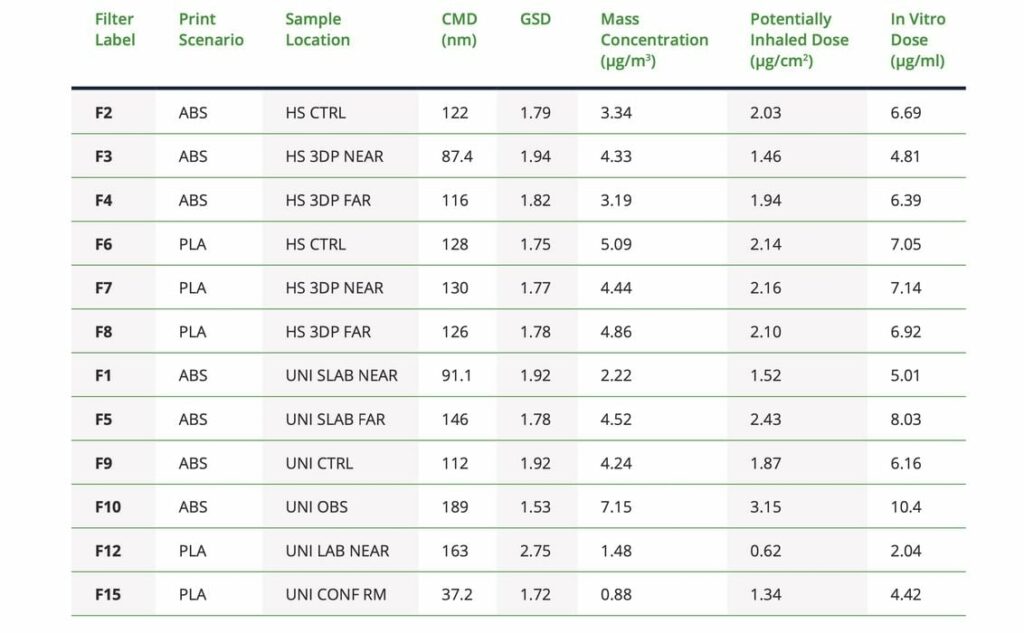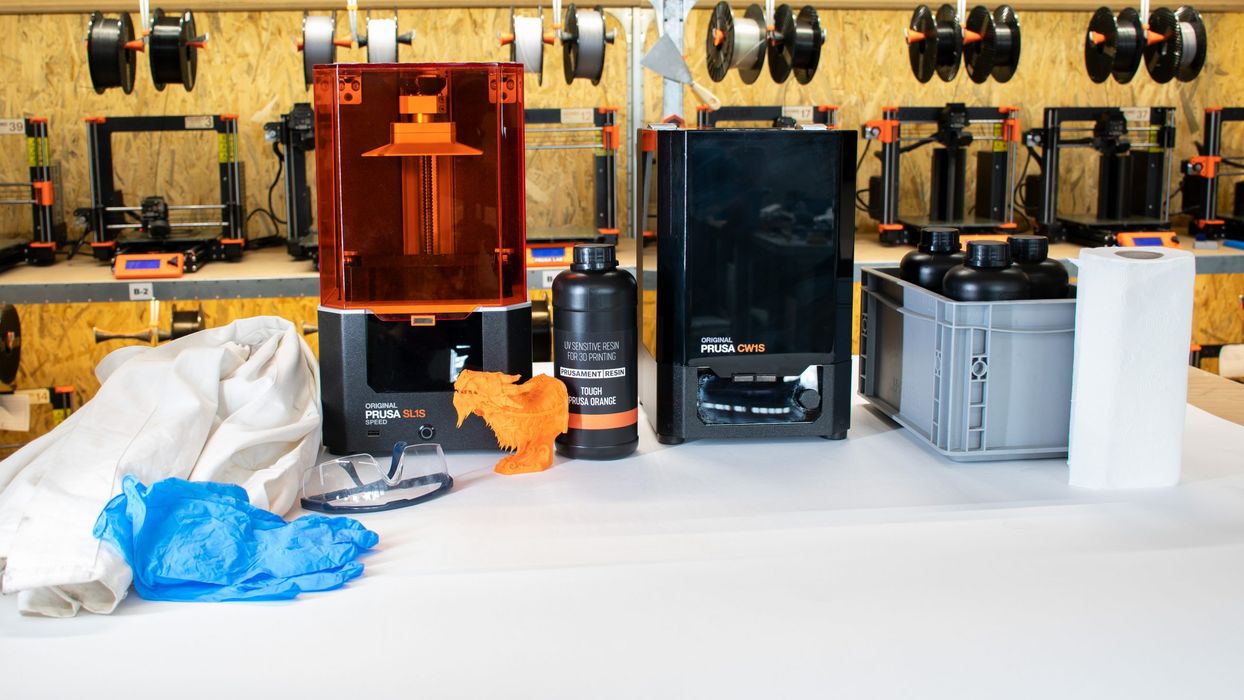
Researchers from Chemical Insights and Prusa Research have published reports on 3D printer safety that should be standard reading for all participants.
The first report deals with FFF 3D printing, and was published by the Chemical Insights Research Institute, an institute of Underwriters Laboratories, Inc.
Chemical Insights FFF Safety Report

This has long been a topic in FFF 3D printing: what are the dangers from emissions that are produced when various polymer filaments are heated? In the past there have been studies indicating two types of issues:
- The production of tiny nanoparticles that can become airborne and inhaled
- The toxicity of materials transported by those nanoparticles
Previously, surveys found ABS to produce far more particles and toxins than PLA, and ventilation was always recommended.
The new report delves a bit deeper and with a different methodology. They explain:
“Aerosol measurement tools were used to study the particle emissions from two of the most common 3DP filaments, acrylonitrile butadiene styrene (ABS) and polylactic acid (PLA). Using Multiple Path Particle Dosimetry (MPPD) software, the level of particle deposition based on specific lung and breathing characteristics was determined. Human airway epithelial cells were exposed to 3DP particles and various cellular bioassays and metabolomic profiling were employed to assess the potential for cellular injury, inflammation, and oxidative stress which can lead to DNA damage within cells.”

So they captured emissions and exposed them to living cells to see what happens. This table shows their measurements. Note that the “CTRL” is a “room without 3D printers”. Strangely, you’ll notice that the levels in the CTRL rooms sometimes seem higher than those in 3D print rooms, which is a bit confusing to me. I guess the nanoparticles can make their way through the air to all nearby rooms.
They also write that levels below 5μg/cm2 are considered non toxic. However, you’ll note several measurements exceed that level. One of their conclusions:
“However, in sum, ABS appears to have higher toxicity as the particles collected farther from the printer induced greater reductions in cellular viability than PLA when comparing the high doses only. This suggests that proximity to 3DP during printing should be discussed when recommending safety guidelines along with ventilation and filtration mitigation strategies.”
Overall they do state that toxic effects can be produced even with small levels of exposure, strongly suggesting that ventilation should always be used with FFF 3D printers.
Prusa Research Resin Safety Report
Prusa Research posted a long and detailed study they undertook to explain the safety concerns with resin 3D printers. While the company began making FFF devices, they added resin equipment in recent years, leading to their move to further education customers on resin safety.
Unlike any other such posting I’ve seen, this report actually describes the chemical mechanisms involved in creating the toxicity. It turns out that there is quite a tradeoff between material function and toxicity: some of the “tough” resins used in the industry have the worst toxicity.
“Pruscientists” examined their own resins as well as others, putting them through certified tests to determine levels of toxicity. They looked at a variety of scenarios, both during and after 3D printing.
I’m not going to reproduce the report here, as I strongly suggest any resin 3D printer operator should read through their report carefully. However, there are some key takeaways:
- “It is unwise to touch models with bare hands.”
- “Another set of tests for the skin irritation effect showed that short exposition to a well-washed 3D print is well within the limits.”
- ”Even though some resins may come with good cytotoxicity, they may still cause health issues after repeated exposure.”
- “Work in a well-ventilated room.”
- ”Have your workplace set on an easy-cleanable surface.”
- ”Place the printer in a disposable tray.“
- “Always have paper towels within reach.”
- “Always use disposable gloves and protective eyewear.”
I completely agree with these and the other recommendations in their report. I would also point readers to a post we made some time ago on tips for resin 3D printing, many of which are safety related.
https://www.fabbaloo.com/news/24-resin-3d-printing-tips

